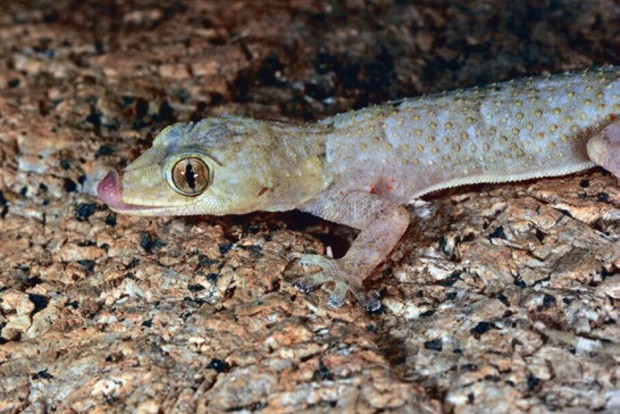Begin typing your search...
Transcontinental Journeys: How a gecko from Africa crossed the Atlantic Ocean
If you see a gecko scampering up the side of a house in Florida or somewhere in Central or South America closer to the Equator, there is good chance it is an African house gecko, Hemidactylus mabouia.

Chennai
Little and brown, the African house gecko is now widespread in the Western Hemisphere. But the gecko originated in southeastern Africa, from Zimbabwe, Mozambique and nearby areas. So how did it cross an ocean and come here?
In a paper published on Wednesday in Royal Society Open Science, researchers have reconstructed the evolutionary history of H. mabouia, revealing it to be a diverse collection of closely related species that include as many as 20 lineages across Africa. They show that only a single lineage — Hemidactylus mabouia sensu stricto — was able to spread successfully throughout Central and West Africa as well as in the Americas. The paper also offers a new way to test an old hypothesis — that African house geckos stowed away on vessels involved with the trans-Atlantic slave trade. The slave trade is also thought to have transported the Aedes aegypti mosquito and several earthworm species to the Americas from the African continent, and the new research further reveals its ecological effects in addition to its human toll.
Though African house geckos are much larger than a mosquito or earthworm, geckos are excellent stowaways. The small lizards live in crevices and can survive for some time without food, according to Ishan Agarwal, a herpetologist and an author of the new paper. A single stowaway gecko with a bellyful of eggs would be enough to start a new population of geckos in a new land, without attracting much notice. “People never really looked at them,” said Aaron Bauer, a herpetologist at Villanova University and a co-author of the paper. Many herpetologists, he said, consider the geckos to be a “trash” species, meaning weed-like and uninteresting.
Dr. Bauer first thought about reconstructing the evolutionary history of the African house gecko about a decade ago. Dr. Bauer also knew of two papers from the 1960s that noted the potential link between the gecko and the trans-Atlantic slave trade. Back then, researchers lacked the technology to test the theory; but in the 2010s, Dr. Bauer could do it. Margarita Metallinou, a post-doctoral researcher working with Dr. Bauer, helped to conceptualise the project and began sequencing some specimens. But then tragedy struck: In 2015, Dr. Metallinou died in an accident in Zambia while conducting research, which set back the project. Dr. Metallinou’s colleagues continued the research, collecting tissue samples from museum specimens of African house geckos across the world. Their final data set included specimens from 186 geckos. Dr. Agarwal took on Dr. Metallinou’s responsibilities and did the bulk of the sequencing work.
The researchers were surprised at the significant diversity of the H. mabouia’s 20 interrelated species, Dr. Agarwal said.
The authors have some theories. Unlike forest-bound geckos, H. mabouia sensu stricto in African countries is most often found in open spaces, including clearings and human villages. Though sensu stricto faces competition from the many other gecko species in Africa, it may have spread more easily in the Americas, which have fewer native geckos.
Imbler is a reporter covering science for NYT
The New York Times
Visit news.dtnext.in to explore our interactive epaper!
Download the DT Next app for more exciting features!
Click here for iOS
Click here for Android
Next Story



